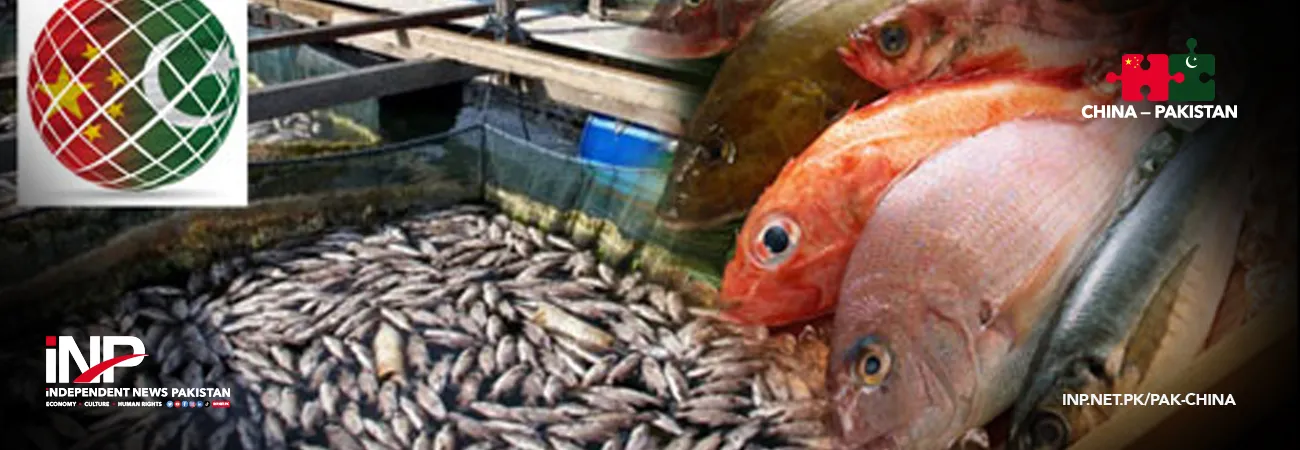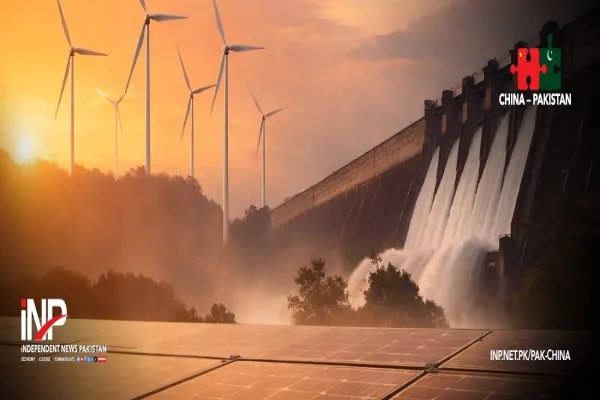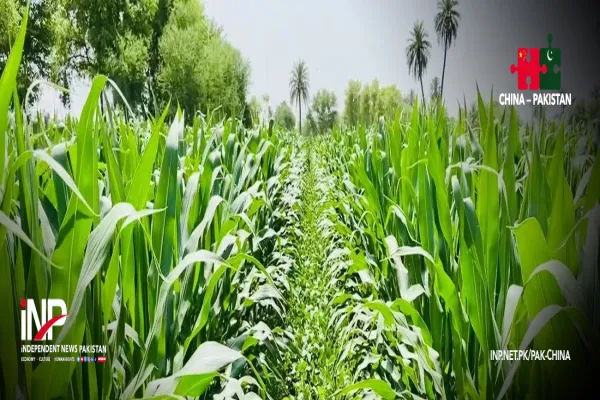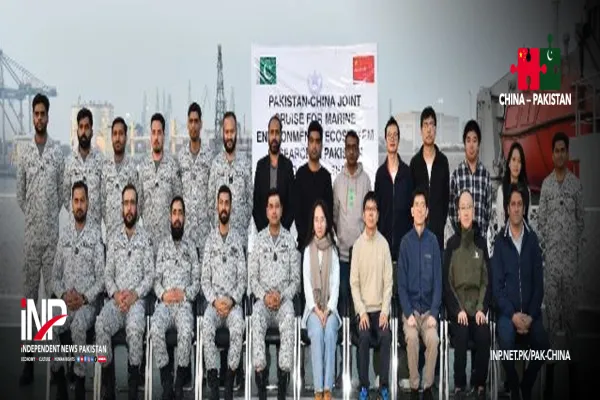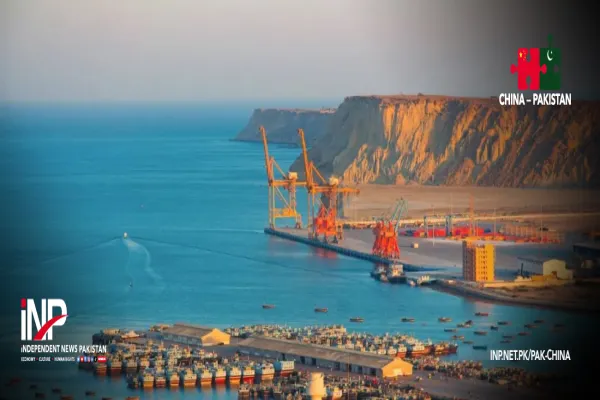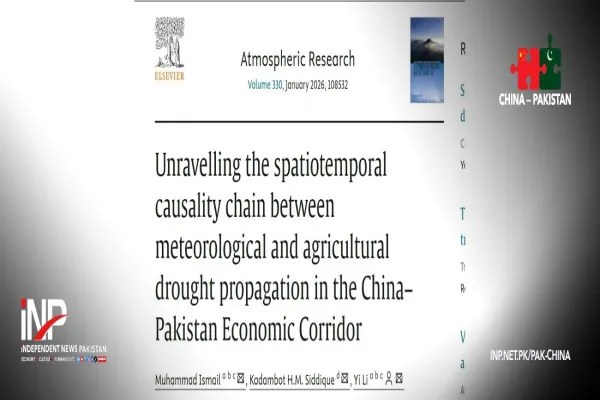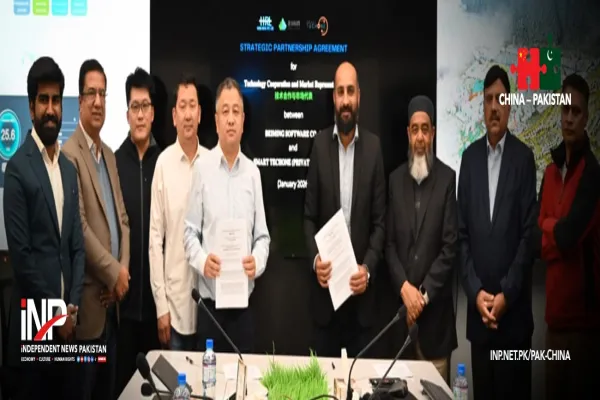i NEWS PAK-CHINA
In its 10-year journey, the multibillion-dollar China-Pakistan Economic Corridor (CPEC) has opened up a golden chapter of development in different sectors of Pakistan, strengthening the economy and generating a wealth of job opportunities. However, the fisheries sector largely remained a neglected sector despite its huge potential promising a fortune to both the sides. Discussions with experts – representing the provincial fisheries departments and international organizations – leads to the conclusion that this vital sector is in dire need of development under the CPEC for a major boost. According to these experts, the government must allocate areas or water pockets as aquaculture zones along the CPEC route. In this way, the fisheries sector can be turned into a billion-dollar industry in Pakistan equally fulfilling the local needs of food and nutrition.
Talking to WealthPK, aquaculture specialist at the World Bank Aslam Jarwar said, “The coastline in Pakistan, which stretches over 1000km, can be widely used for the fisheries component. Alkaline soil, water, temperature, and photo period (sun hours) are ideal for both marine and inland fisheries. To boost this sector, establishment of fishing setups along the CPEC route can be of great favor. Fishing harbours and marine sector in Karachi provide 70% of fisheries output. For the last 3-4 years, commercial inland and marine fish farming is improving.” Jarwar said Sindh was the cradle of shoreline, boasting a vast scope for both marine and inland fisheries. The inland fisheries sector harvests about 57,000 metric tonnes per annum, which is far less than its true potential. The foreign investors and all the local stakeholders in this sector are keen to take a step forward if they are offered subsidies and technical assistance.
Continuing the discussion, Jarwar said this sector lagged behind due to the age-old, worn-out traditional harbours, jetties, inappropriate landing decks and processing units, negligence in value addition, etc. As a result of all these drawbacks, only 10% of qualitative fish is fit for export. Mostly, raw seafood is exported in frozen, fresh, or in a little bit salted form. All these things need revival on modern lines.
“During the last few years, any investment in this sector related to the CPEC has never been approached. Establishment of cold chains, high-tech processing units, feed mills, and other value additives will lead to an increase in the fisheries production of Pakistan. To make this sector systematic and efficient, a proper multi-approached database is very important. Pakistan can improve all aspects of this sector through cooperation with China,’’ said Jarwar, who is also former director marine at the Sindh Fisheries Department.
Talking to WealthPK, Muhammad Moazzam Khan, Technical Advisor (marine fisheries) at the World Wildlife Fund (WWF) Pakistan, said expectations from the CPEC were still on the way to fulfilment. Not a single step has been taken to establish processing units, value-addition factories, hatcheries, or other related infrastructure except a few infrastructure developments, he added. According to Moazzam, fresh seafood is costlier than the frozen but costlier are the prepared products, i.e. tinned, medicines, cosmetics, and other commercial products.
“We have about 55 functional processing plants for freezing located at different points [Ormara, Sonmiani, Pasni, Gwadar, Jeevani, Karachi, etc] working at 20% of their capacity. All of them are somehow facing the crisis. They usually do freeze but are not high-tech concerning any other components. Many of these are traditional plants but some new ones are Chinese showing good performance,” he said.
“Despite viability, no new licenses/permissions were granted after 2005 concerning marine fishing. The Chinese business fellows mostly ask for licences for independent fishing, which makes attraction for investment related to CPEC controversial. It would be much better if the Chinese use the already available capacity in the country. A proper framework in this regard will help boost fisheries all over Pakistan, especially in Sindh, which is the pivot of most seafood exports in the country,” added Moazzam.
In a discussion with WealthPK, Dr. Abdul Latif Korai, Director of Fisheries (Development), Directorate General Fisheries Sindh (Inland), Karachi, said, “In extracting the CPEC’s core benefits for the fisheries sector, a proper planning was to be made. We submitted a few proposals to the CPEC experts related to the establishment of fish hatcheries, feed production, research, and development but we never got feedback. Proper coordination from both China and Pakistan is necessary, which will not only boost the fisheries sector but also the whole industrial segment.”
Seafood exporter and Vice Chairman of Pakistan Fisheries Exporters Association, Karachi, Mian Saeed Fareed said, “Concerning CPEC, no such development has occurred in Sindh. A proper mechanism is needed to get benefits from its far-reaching outcomes. CPEC can prove beneficial in two ways: establishment of a value-adding fisheries network, and activating the transportation of seafood products’ cargo through multiple channels, e.g., road and sea routes.’’
Talking to WealthPK, Deputy Director of Environment at the Gwadar Development Authority (GDA) Abdur Raheem said no prominent development had ever happened in Gwadar related to fisheries except a few trials to regulate the system here about 3-4 years ago.
“In these trials, the Pakistani containers of Indian Mackerel were shipped to China via Dubai. Basically, these shipments were bound for Dubai from where they were to be forwarded to different international destinations including China. Fish hatchery establishment was another plan which is still not operational. Another development was to set up a 200- metric ton seafood processing plant in Gwadar Free Zone. Our fishermen are badly in need of advanced training, as the traditional ways are causing 50%-70% post-harvest losses. Modern equipment and technology training are very important for improving their practices. China is advanced in all types of fisheries practices, including processing and marketing, and their coordination at the official level is very important to make all the Pakistani coastlines productive concerning fisheries,” said Raheem.
In a discussion with WealthPK, Deputy Director of Fisheries (Inland) Quetta, Sikander Akram said, “From a broader prospect, we have not got any benefits through the CPEC concerning the transfer of knowledge, technology, rehabilitation of harbours/jetties/landing sights, and investment, etc. Not any project related to these issues submitted from our side is ever entertained. Overall, it is the most neglected sector in the whole CPEC scenario. Lack of preservation facilities related to logistics, especially at the landing sights, is badly affecting the quality of most inland and marine fisheries.’’
“About 770km coastline of Balochistan is without any hatching, production, processing, or value addition unit. Annual mix or wild catch from Balochistan’s coastline is about 160,000 metric tonnes, 85% of which is transported to Karachi due to insufficient storage and processing facilities, causing 40-50% post-harvest losses. Use of wooden vessels and landing sites is the main reason causing contaminations in the catch,” he said.
“As soon as the Gwadar Port becomes fully active, it will become a business hub rather than a fishing site. Sea traffic will make the fish migrate to other waters. To benefit the fishing communities, it is very important to establish a fishing port in other places,” Sikandar said. “China is advanced in the fisheries technology in all aspects. Pakistan needs the transfer of technology, training, technical coordination, harbour/port engineering, feed mills, hatcheries, etc. So, Chinese coordination must be acquired to boost our fisheries sector and get the CPEC’s real economic benefits in this regard,” he said.
Sharing the overall development in the fisheries sector with WealthPK, Director of Fisheries Khyber Pakhtunkhwa, Zubair Ali said there was too much potential for fish farming in the province, especially for trout, but the true potential of the CPEC still remained untapped due to the unavailability of a systematic policy at all national levels.
“To overcome the lack of hatcheries, feed, storage, processing, and other related issues, the KP Fisheries Department and Danish experts are going to sign a contract. The core objective is to establish these setups along the CPEC. Like tobacco farming, it was part of the plan that the farmers will get seed from them and sell it back after proper growth. Unfortunately, all the plans were disrupted by the COVID-19 and never revived. From the Chinese policymakers/businessmen, we demand the same kind of setup. In KP, people are doing individual farming and they mostly lose their flocks due to diseases or natural disasters. However, under systematic measures and agreements, they would be safer. Proper policies are badly needed to reap the CPEC profits.”
Talking to WealthPK, Deputy Director of Fisheries (Planning and Development) Gilgit Baltistan Ikram Hussain said, “The federal government, around three years ago, requested that we prepare a proposal concerning the fisheries practices related to the CPEC. We submitted a proposal worth PKR15 million, covering areas from Kohistan to the Khunjerab border. All fisheries farms, natural resources, details of stocking material, hatcheries/ feed processing requirements, etc., were the major components of the proposal. From commercial farming to tourist needs, all aspects to promote this sector were also added. However, no funds were issued after the approval and no further steps were taken for revival. Proper planning is necessary to benefit the most from the CPEC but nothing is on the ground yet.”
Credit: INP-Pak-China



